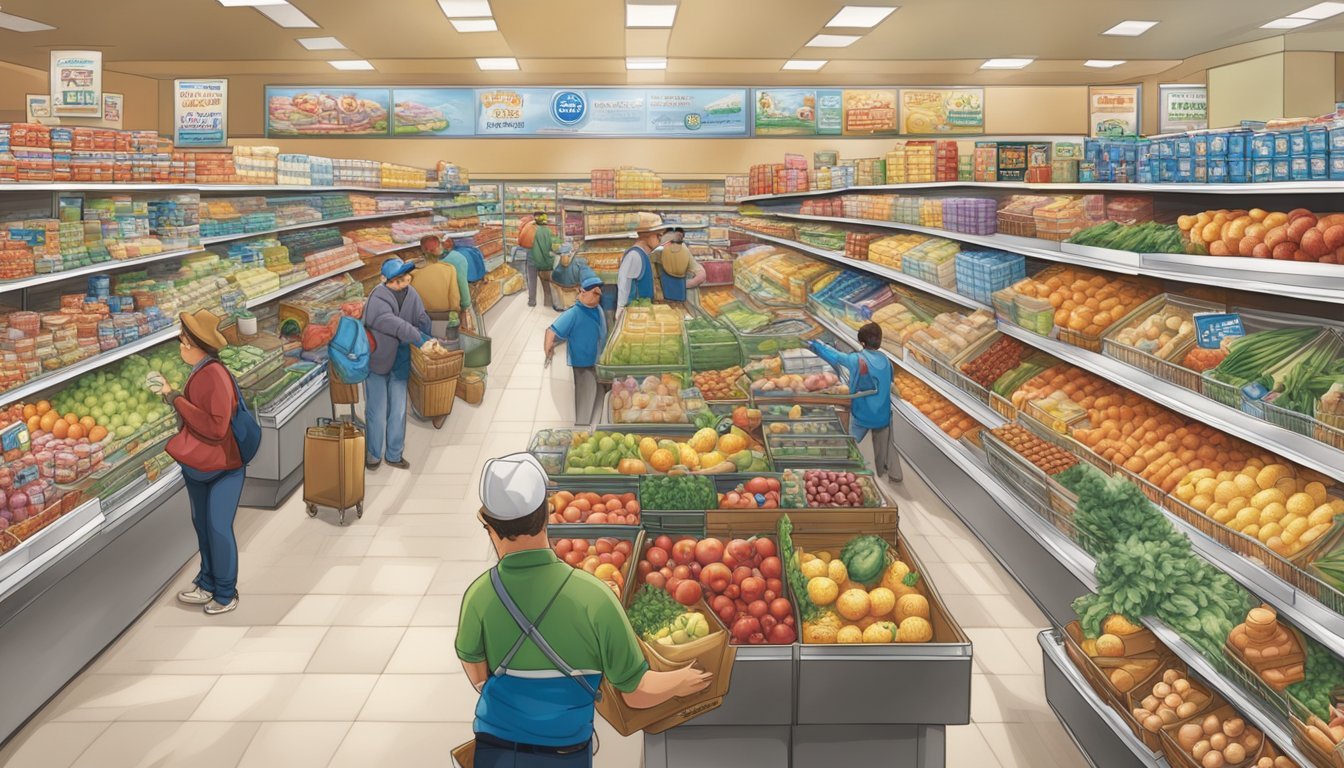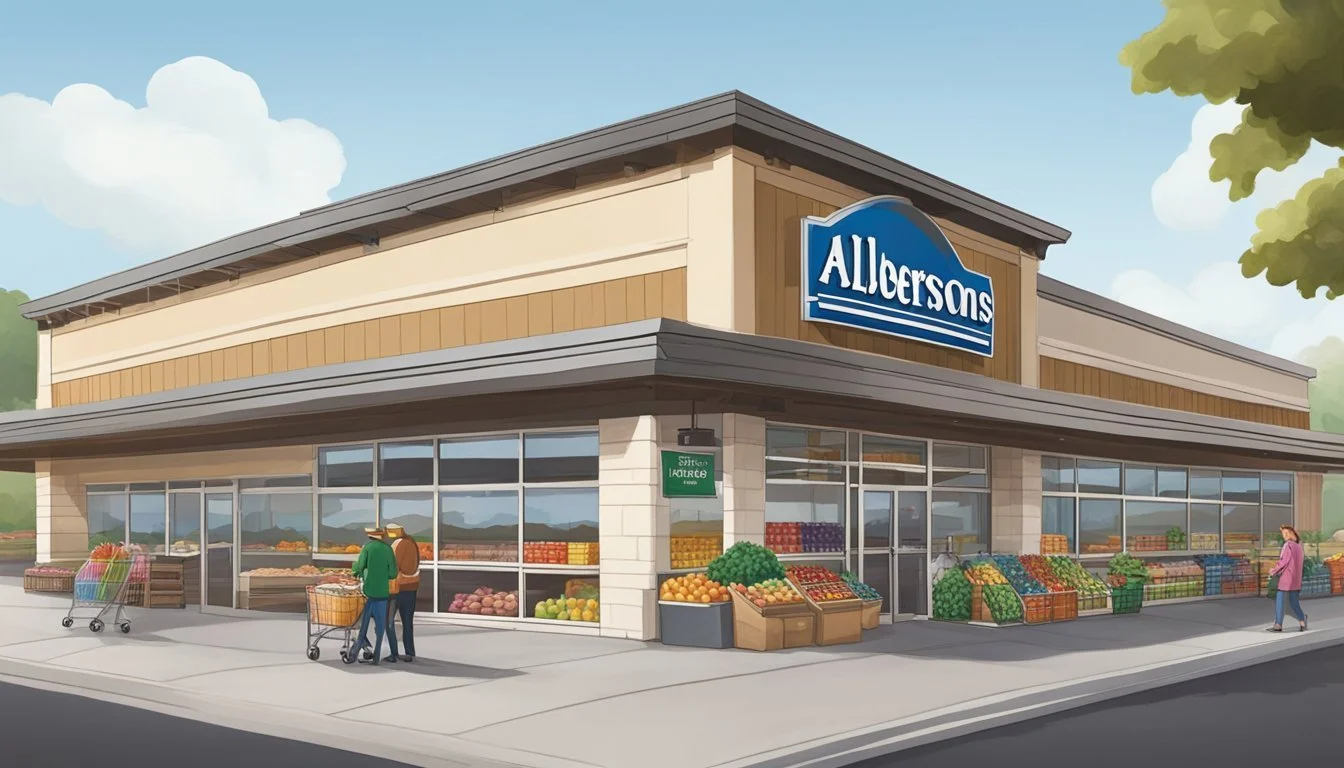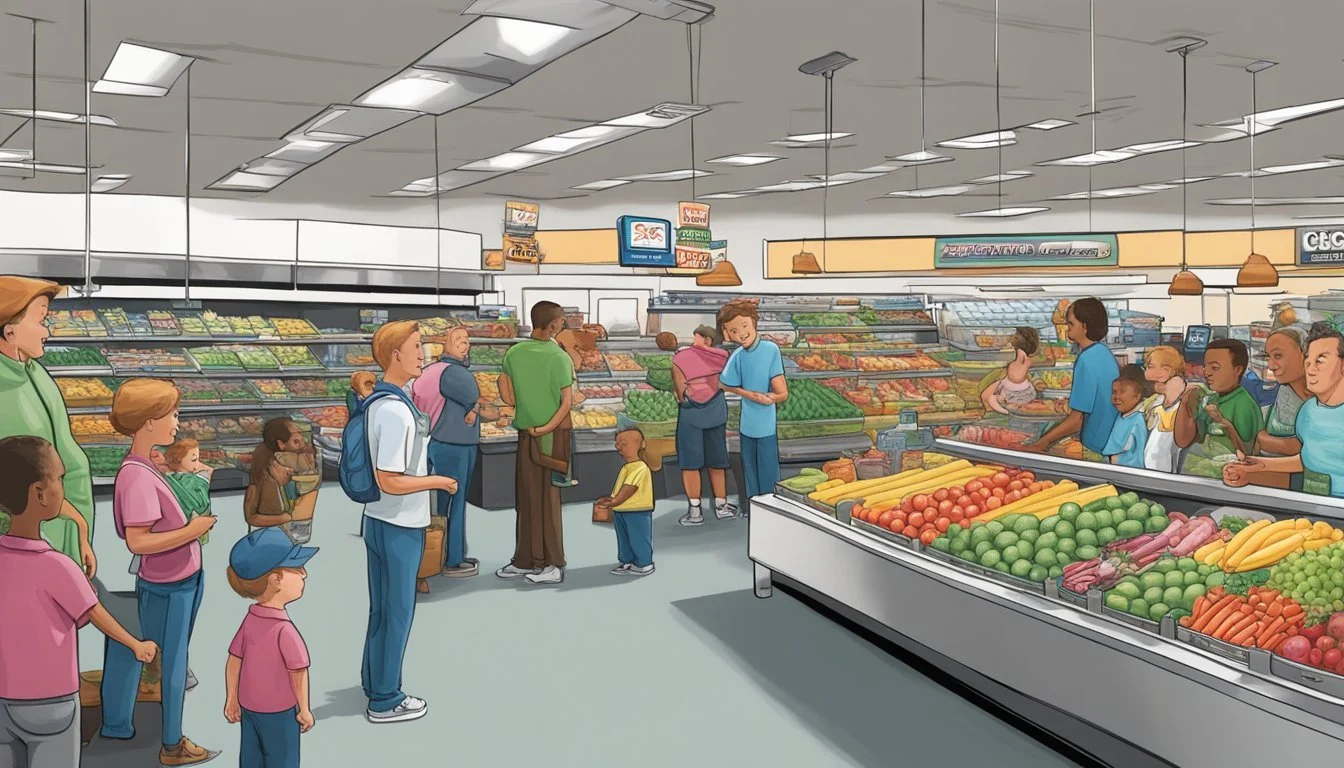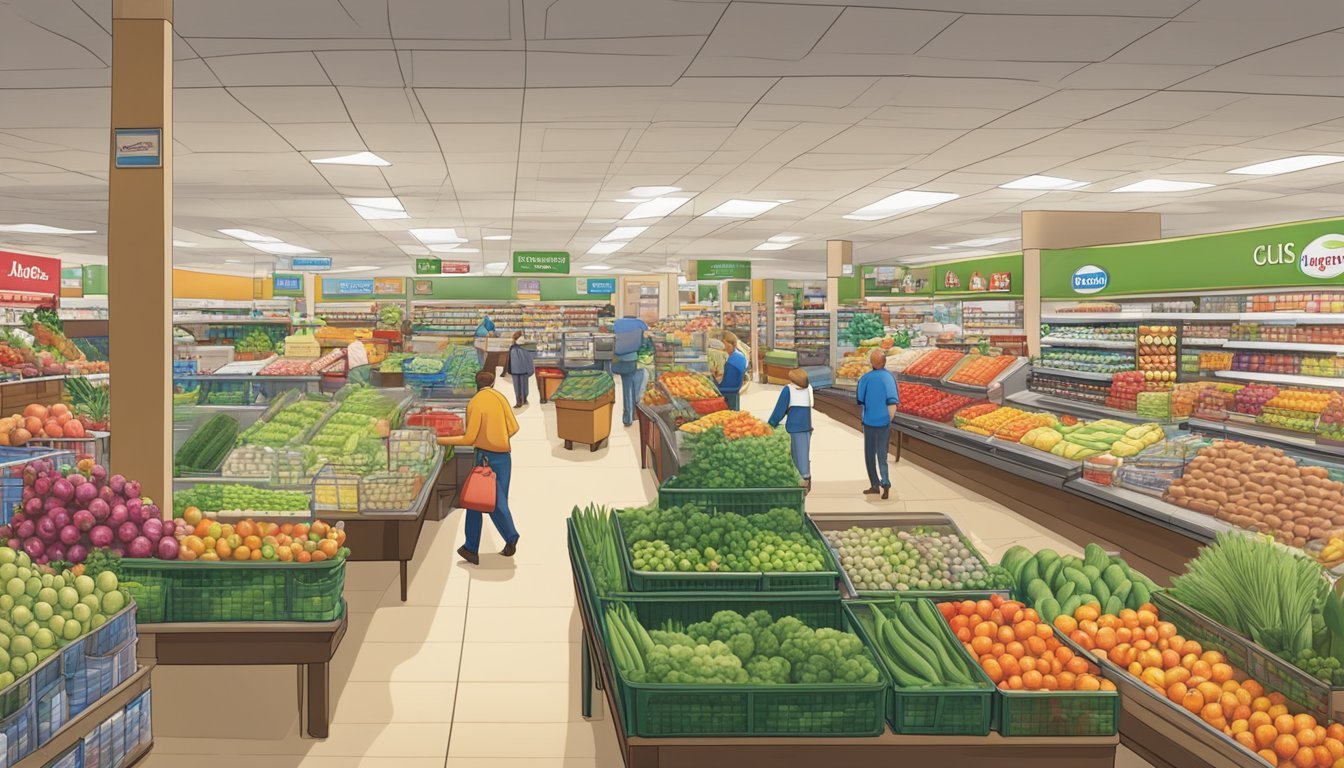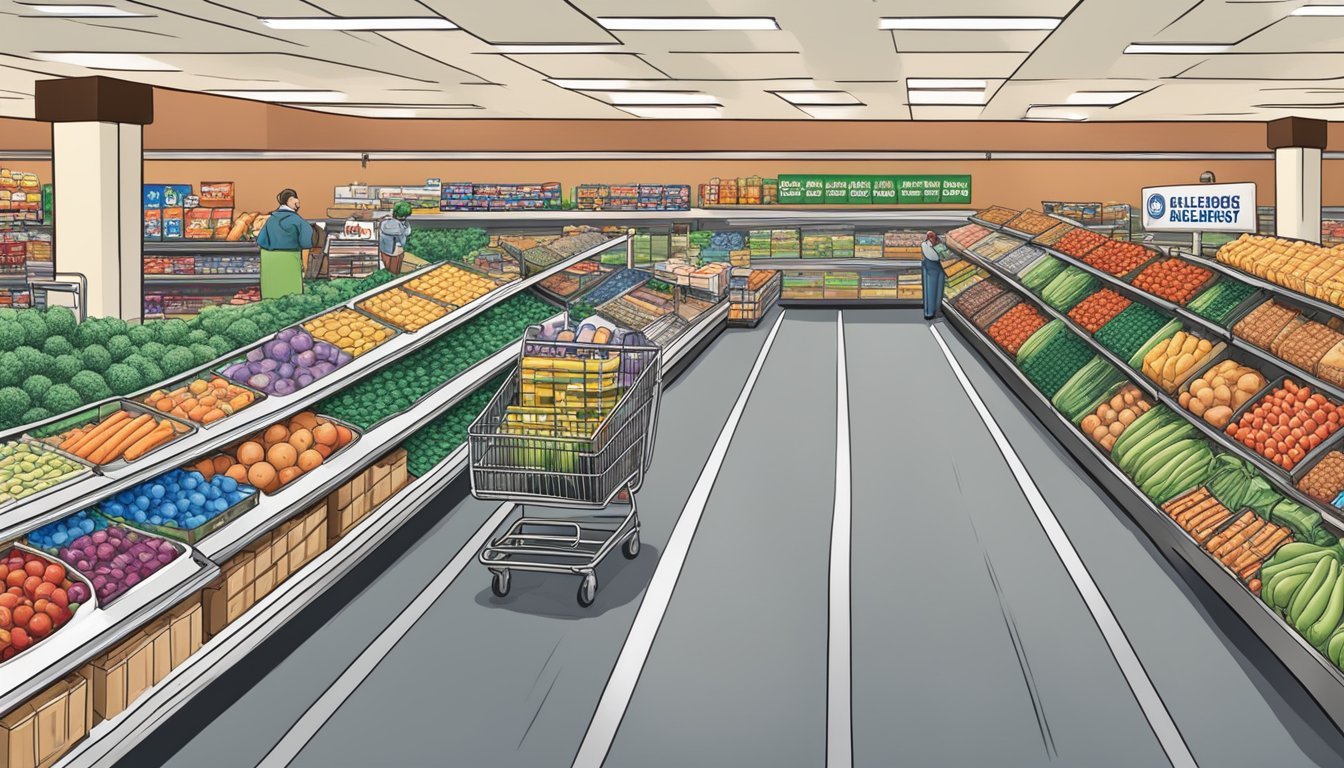Albertsons vs Piggly Wiggly
Comparing Shopping Experiences and Value
Part of Our Grocery Store Guide with Details on Albertsons and Piggly Wiggly
Evaluating two prominent grocery store brands, Albertsons and Piggly Wiggly, involves a close examination of various factors, including product selection, pricing, customer service, and store environment. Each brand carries its own history, with Albertsons having been a mainstay in American grocery shopping since its founding in 1939, and Piggly Wiggly claiming its roots as an innovator with the establishment of the first self-service grocery store in 1916.
While Albertsons has expanded through mergers and acquisitions to become one of the largest food and drug retailers in the United States, Piggly Wiggly has built a reputation for its community-centric approach, with many locations independently owned and operated. The comparison between these two grocery brands is not just about which one is better overall, but which one aligns more closely with consumer preferences and values, offering an experience tailored to the needs of their local shoppers.
The grocery industry has seen significant shifts with the introduction of online shopping and increased competition from non-traditional grocery sellers, making the competition between Albertsons and Piggly Wiggly all the more relevant. Consumers are seeking value, convenience, and a pleasant shopping experience, factors that both Albertsons and Piggly Wiggly strive to provide in their own unique ways. The question of which grocery store stands out as the better option hinges on the nuanced needs and expectations of today’s discerning shoppers.
Company Backgrounds
In comparing Albertsons and Piggly Wiggly, it's essential to understand their origins, growth, and current status within the grocery store arena. These details provide a foundation for understanding each supermarket chain's market presence and customer base.
Albertsons
Albertsons Companies, Inc. is one of the largest food and drug retailers in the United States. It was founded by Joe Albertson in Boise, Idaho, in 1939. As of recent reports, Albertsons operates under 20 well-known banners, including Safeway, which it merged with in 2015. This supermarket chain prides itself on offering a variety of products and has a significant footprint in the grocery sector.
Founded: 1939
Founder: Joe Albertson
Headquarters: Boise, Idaho
Number of Locations: Over 2,200 as of 2021
Banners Include: Albertsons, Safeway, Vons, and others
Piggly Wiggly
Piggly Wiggly, introduced by entrepreneur Clarence Saunders in 1916 in Memphis, Tennessee, holds the title of America's first true self-service grocery store. Piggly Wiggly's innovative approach changed the way supermarkets operate, introducing features like shopping carts and individual item pricing. The chain's focus has been on a customer-oriented shopping experience, and it has maintained a robust presence in the Southern and Midwestern United States.
Founded: 1916
Founder: Clarence Saunders
Headquarters: Keene, New Hampshire
Number of Locations: Approximately 600 stores as of 2021
Known For: Being the first self-service grocery store
Both Albertsons and Piggly Wiggly have left indelible marks on the grocery store landscape, with each carving out its unique position. Albertsons has grown into a powerhouse through mergers and expansion, including the notable inclusion of Safeway, while Piggly Wiggly—often regarded as a pioneer in the supermarket chain industry—remains a significant player with its customer-centric approach.
Geographical Presence
The geographical footprint of a grocery store chain is a significant factor in its overall market presence and accessibility. Each chain’s distribution across regions and the nation can affect consumer choices and brand loyalty.
Regional Stores
Albertsons has a strong regional presence, with stores strategically placed across the western and southern United States. In California, Albertsons serves a large customer base, offering a variety of grocery items that cater to the diverse population of the state. Moving eastward, its reach extends into Arizona, where Albertsons has been a familiar name in food retail.
Piggly Wiggly, conversely, operates predominantly in the Southeastern and Midwestern regions but has expanded through its parent company, potentially including stores from Colorado, Wyoming, and New Mexico as a result of recent acquisition deals. These stores may not carry the Piggly Wiggly brand but expand its geographical influence nonetheless.
California: Albertsons strong
Arizona: Albertsons recognized
Colorado, Wyoming, New Mexico: Piggly Wiggly expansion through acquisitions
Nationwide Impact
Albertsons Companies, headquartered in Cincinnati, Ohio, has grown to become one of the largest food and drug retailers in the United States. They have a strong presence in a multitude of US states, including those on the Pacific Coast like Oregon and Washington. Their national impact is multifaceted, stretching beyond the traditional supermarket model.
Piggly Wiggly maintains a less extensive nationwide presence compared to Albertsons. However, they hold a significant position in the grocery industry with their franchising model, allowing them to have stores across various states operated by independent retailers. This model enables Piggly Wiggly to adapt and cater to local markets, fostering a unique connection with their customer base.
Headquartered: Cincinnati (Albertsons)
Pacific Coast Presence: Oregon, Washington (Albertsons)
Franchising Model: Allows Piggly Wiggly nationwide adaptability
By evaluating their geographical presence, one can see how Albertsons and Piggly Wiggly approach market expansion and customer reach differently within the United States. Each chain's strategy reflects its brand philosophy and growth ambitions, with Albertsons favoring direct operation and Piggly Wiggly leveraging franchising.
Financial Overview
In assessing Albertsons and Piggly Wiggly, financial performance indicators such as sales and market positioning provide a quantitative basis for comparison.
Sales Performance
Albertsons Companies Inc., a leading grocer, recently reported a definitive agreement on their strategic sale to gain antitrust approval in light of its proposed merger with Kroger Co. This merger is eyed by Wall Street as a transformative deal that could create a supermarket titan. Albertsons boasts numerous brands, including Safeway and Jewel-Osco, which significantly contribute to its market share and sales volume. The company operates 2,273 stores across 34 states, making it a formidable player in the grocery market.
Piggly Wiggly, with a smaller footprint, is often recognized for its community-centric approach and local market appeal. Their focus on the customer experience has cultivated a loyal consumer base. Although they do not compete on the same scale as Albertsons, their acquisition of roughly 400 stores from the potential Kroger-Albertsons merger indicates strategic growth that could influence their sales performance positively.
Market Analysis
The grocery market is a highly competitive landscape where mergers and acquisitions are not uncommon. This is reflected in the role of antitrust laws ensuring that such market consolidations do not harm competition. With Albertsons and Kroger's merger, the companies must navigate these legal waters carefully, as they collectively employ around 700,000 people. Their combined forces could reshape the grocery landscape, impacting the sales, marketing strategies, and pricing across the industry.
On the other side, Piggly Wiggly's sales strategy harnesses its local brand advantage, a factor not easily replicated by larger chains. As they expand through strategic acquisitions, they may bolster their presence and market influence, potentially affecting regional sales trends. The ripple effects of these moves are analyzed by experts to predict shifts in grocery market dynamics and Wall Street performance.
Product Selection
When comparing Albertsons and Piggly Wiggly, product selection is a critical aspect that shapes the shopping experience. Variations in store brands, the array of available products, and overall product quality are significant factors.
Store Brands and Variety
Albertsons offers a comprehensive range of store brands that cater to diverse consumer needs. The Signature line, for instance, includes a broad array of products, from pantry staples to ready-to-eat meals. At Piggly Wiggly, shoppers find less emphasis on store brands but a satisfactory selection that covers fundamental grocery needs.
Albertsons:
Signature Select - Pantry essentials, frozen goods
Signature Farms - Fresh produce
Signature Cafe - Ready-to-eat meals
Piggly Wiggly:
Limited store brand options, focusing primarily on value.
Freshness and Quality
In terms of freshness and quality, Albertsons typically showcases a strong commitment, particularly in its produce and meat departments. Their stores frequently offer a variety of fruits, vegetables, and high-quality cuts of meat. Piggly Wiggly also places importance on fresh goods, though the selection may be more variable depending on the location.
Produce:
Albertsons: Often features seasonal and organic options.
Piggly Wiggly: Stocks a standard range, with emphasis on regional produce where available.
Meat:
Albertsons: Known for a variety of meat choices including premium options.
Piggly Wiggly: Offers essential meat selections, with a focus on affordability.
Both Albertsons and Piggly Wiggly cater to customers seeking freshness in their baked goods departments, though Albertsons might provide a slightly wider assortment of bread and other bakery products. Vegetables and other fresh products are accessible at both stores, attesting to their commitment to quality and customer satisfaction.
Pricing Strategies
In the competitive landscape of grocery retail, Albertsons and Piggly Wiggly employ distinct pricing strategies. They each use a mix of pricing models to retain their customer base and attract new shoppers.
Cost Comparison
Piggly Wiggly often customizes its prices to cater to the markets they serve, which can vary from suburban to rural settings. Prices may show some variation between their high-end suburban locations versus their more cost-conscious rural formats. On the other side, Albertsons, being a larger chain, may offer a wider range of food prices but not as tailored to local preferences. Their consistent presence in markets may lead to more stable pricing, but it is not necessarily lower.
Albertsons Example: Standardized pricing may mean less fluctuation in costs.
Piggly Wiggly Example: Variable pricing can better match local economic conditions.
Discount Offers
Albertsons and Piggly Wiggly both engage customers with various types of discount offers. Albertsons might implement a rewards program or weekly deals on select items to entice savings-conscious shoppers. Piggly Wiggly could counter with aggressive promotions in certain departments, such as meat or produce, to draw in local consumers looking to save on essentials.
Albertsons Discounts: Loyalty rewards and weekly sales.
Piggly Wiggly Discounts: Targeted promotions that provide immediate reductions at checkout.
Consumer Experience
When consumers choose between Albertsons and Piggly Wiggly, the store layout and design, alongside customer service are crucial factors influencing their shopping experience.
Store Layout and Design
Albertsons typically presents consumers with a modern and organized shopping environment. Stores are often segmented into various departments such as produce, meats, bakery, and pharmacy, simplifying the shopping process. Clear signage and a logical flow from section to section enable customers to navigate the store with ease, contributing to a positive retail experience.
Piggly Wiggly, catering more to regional markets, may have a varied layout reflecting local preferences. Stores are typically straightforward with an emphasis on accessibility, making it easy for consumers to find everyday items. While some locations may not boast the same level of modernity as Albertsons, Piggly Wiggly offers a homely charm that can appeal to their consumer base.
Customer Service
Albertsons is known for its commitment to customer service, with staff readily available to assist shoppers in finding products. They often have well-staffed departments, such as delis and bakeries, providing personalized services. In addition, Albertsons has invested in customer service training to ensure shoppers have a helpful and efficient experience.
On the other hand, Piggly Wiggly takes pride in its community-centric approach. Employees are often local hires who bring a personal touch to their service, knowing many customers by name. While some stores may be smaller and possess fewer resources, the dedication to customer satisfaction is a priority, fostering a loyal consumer following who appreciate the familiar and friendly atmosphere.
Business Practices
In the intricate dance of grocery store chains, business practices often hinge on strategic growth through mergers and acquisitions, balanced against the scrutiny of antitrust regulations. How Albertsons and Piggly Wiggly navigate these waters reflects their readiness to adapt and comply within the competitive grocery market.
Mergers and Acquisitions
Albertsons and Piggly Wiggly have experienced significant change and growth, often through the avenue of mergers and acquisitions. For instance, the proposed $24.6 billion merger between Kroger and Albertsons suggests an intention to create a formidable entity that can compete with retail giants like Walmart and Amazon. This move would combine two of the largest traditional grocery store corporations in the United States.
Conversely, Piggly Wiggly, under the umbrella of its parent company C&S Wholesale Grocers, has engaged in the acquisition of numerous stores. Notable is their recent expansion where approximately 400 stores from Kroger and Albertsons were slated to transition to Piggly Wiggly's parent company, which also operates 160 grocery stores including Grand Union on the east coast.
Antitrust Regulations
When retail mergers like the Kroger and Albertsons deal enter the conversation, they draw the attention of regulators, most notably the Federal Trade Commission (FTC). The FTC thoroughly examines such deals for any potential harm to competition, leading to the need for companies to gain antitrust approval before finalizing.
In the Kroger-Albertsons case, the plan to divest 413 stores to C&S Wholesale Grocers could be construed as a strategy to mitigate antitrust concerns, showcasing their commitment to avoiding an unfair consolidation of market power. Complying with regulatory standards is not just about legal necessity; it's a demonstration of a company's responsibility to maintain a healthy, competitive market for consumers.
Supply Chain
The efficiency of a grocery store's supply chain is often a determining factor in its overall success. Two crucial components of the supply chain involve the distribution network and the manner in which the store maintains supplier relationships.
Distribution Network
Albertsons operates a complex distribution network with a series of distribution centers strategically positioned to effectively manage the flow of goods. Their system is designed to ensure that stores are consistently stocked with fresh produce and a variety of products. Piggly Wiggly, on the other hand, has a more localized approach, often relying on partnerships with wholesalers like C&S Wholesale Grocers to support their supply chain.
Albertsons:
Distribution Centers: Numeric Count
Regional Reach: Geographic Scope
Piggly Wiggly:
Primary Wholesaler: C&S Wholesale Grocers
Regional Reach: Primary Service Areas
Supplier Relationships
Albertsons has developed strong relationships with a variety of suppliers, from large-scale manufacturers to local farmers, ensuring a diversified product range and reliable inventory. Piggly Wiggly also prides itself on partnering with local farmers, which further emphasizes their commitment to locally-sourced products, enhancing their regional relevance.
Albertsons:
Local Farmers: Collaborations
Manufacturers: Diversity of Partners
Piggly Wiggly:
Local Farmers: Support and Partnerships
Wholesaler Dependence: C&S Wholesale Grocers as a key supplier
Employment and Labor
In assessing Albertsons and Piggly Wiggly, a critical aspect lies within their employment and labor practices, particularly examining how they manage their workforce and their relationships with trade unions.
Workforce Management
Albertsons operates with a structured workforce management system, ensuring that employees are deployed effectively across its numerous locations. They prioritize strategic staffing to meet the dynamic needs of their stores. Piggly Wiggly, often smaller in scale, might offer a more personal management style. Albertsons also uses collective bargaining agreements to streamline their employment terms.
Albertsons:
Employs collective bargaining to negotiate terms.
Stresses on strategic staffing and efficiency.
Piggly Wiggly:
Known for localized management.
Smaller workforce may lead to a more individual-oriented approach.
Trade Union Relations
Albertsons has a history of engaging with union groups, indicating a proactive stance on labor relations. Unionized workers have the platform for collective bargaining, allowing them to negotiate wages, benefits, and working conditions. Piggly Wiggly, with varying degrees of unionization depending on the location, may have different experiences with labor relations.
Albertsons:
Engages with multiple union groups.
Workers are part of the collective bargaining process.
Piggly Wiggly:
Unionization varies by store location.
Some stores may have less formal union relations.
Competitive Analysis
In the grocery store landscape, Albertsons and Piggly Wiggly each hold a unique position. This section compares their market influence and competitive brands, offering a snapshot of where they stand in the competitive grocery market.
Market Influence
Albertsons operates a significant chain of grocery stores, rivaling industry giants like Kroger and Walmart. With an extensive network, Albertsons positions itself competitively against other major players like Costco, Sam's Club, and Target, particularly on the west coast where it has a notable presence. Meanwhile, Piggly Wiggly maintains resilience in competitive markets, particularly in the South and Upper Midwest, leveraging a cost-plus concept and high customer loyalty to withstand competition from larger retailers like Walmart and Kroger.
Albertsons' Market Reach: Predominantly West Coast
Piggly Wiggly's Market Niche: South and Upper Midwest
Competitive Brands
Albertsons faces formidable competition from brands across the spectrum like Amazon, Whole Foods Market, and Trader Joe's in the premium segment, to Winn-Dixie, Harris Teeter, and Publix that offer a range of value to top-tier products. They compete with other large supermarkets including Fred Meyer, Giant, and regional favorites such as King Soopers, and Vons.
Piggly Wiggly stands against diverse formats from hard discounters like Aldi and Food 4 Less, specialty grocers such as Sprouts Farmers Market and The Fresh Market, to upper Midwest entities like Hy-Vee and Wegmans. They share retail space with smaller chains such as IGA and Food Lion, and larger ones like Grand Union and Acme.
Category Albertsons Piggly Wiggly Premium Grocers Amazon, Whole Foods Market, Trader Joe's Sprouts Farmers Market, The Fresh Market National Supermarkets Kroger, Walmart, Costco, Sam's Club, Target, Fred Meyer Kroger, Walmart, Costco, Aldi, Food 4 Less Regional Competitors King Soopers, Vons, Ralphs Wegmans, Hy-Vee, IGA, Food Lion, Grand Union, Acme Southern Presence Harris Teeter, Publix Winn-Dixie, Publix Discount Retailers Food 4 Less, Aldi Aldi, Food 4 Less
Both Albertsons and Piggly Wiggly navigate a complex retail environment with industry titans like Walmart, Costco, and e-commerce behemoth Amazon disrupting traditional grocery models. However, they maintain relevance through strategic market positioning and adapting to consumer needs in their respective markets.
Operational Challenges
In the competitive grocery market, both Albertsons and Piggly Wiggly face operational challenges that impact their business models, such as store closures and supply and demand issues. These challenges are crucial in assessing the efficiency and adaptability of these grocery chains.
Store Closures
Albertsons has experienced periodic store closures due to various factors, including underperformance and strategic consolidations. These closures are sometimes influenced by antitrust concerns, particularly in cases where mergers and acquisitions could significantly reduce competition in the market. For instance, in scenarios like the proposed Kroger-Albertsons merger, federal regulators may require the sale of stores where operations overlap to prevent monopolistic control and preserve consumer choice.
Supply and Demand Issues
Both chains have to navigate supply and demand issues to ensure that shelves are stocked and customer needs are met. Piggly Wiggly, operating mainly in the southeastern United States, and Albertsons, with a wider national footprint, must manage their supply chains to avoid both overstock and understock situations. Efficient inventory management is crucial, especially in times of fluctuating demand or supply chain disruptions, to maintain customer satisfaction and economic stability.
Executive Insights
This section provides a high-level analysis of leadership strategies and foresight from the executive figures of Albertsons and Piggly Wiggly.
Leadership Perspectives
Rodney McMullen, the CEO of Kroger, which is in the process of merging with Albertsons, has made strategic attempts to expand the company's market share amidst challenging competitory landscapes. He believes in navigating the merger with a mindful approach to antitrust concerns, ensuring they maintain a healthy competition in the market.
On the opposite end, Vivek Sankaran, CEO of Albertsons, focuses on driving growth through customer-centric initiatives. Sankaran's leadership aligns with leveraging Albertsons’ strong local presence, aiming to deliver tailored shopping experiences that could edge out the more generalized approach of competitors like Piggly Wiggly.
Strategic Direction
Albertsons under Sankaran’s direction is expanding its reach and attempting to join forces with Kroger to form a powerhouse in the grocery industry. The merger, valued at around $24.6 billion, would increase leverage over suppliers and streamline operations.
Contrastingly, Piggly Wiggly, primarily supplied by C&S Wholesale Grocers, maintains a strong identity in local markets. The expansion of C&S into new regions, as indicated by its recent strategic moves in Oregon, suggests a potential for increased competition, suggesting a strategic direction aimed at regional consolidation rather than national expansion.


